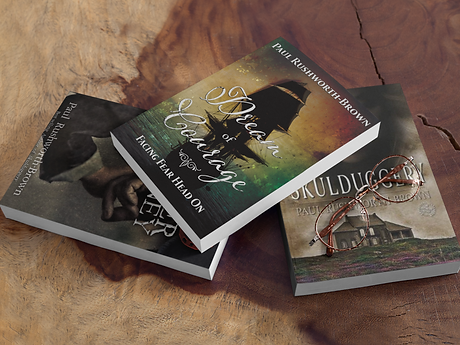Written by Debra Brown and edited by Paul Rushworth-Brown
Bugs and Beds Through the Centuries, a fascinating article written by Debra Brown. The earliest beds were piles of straw, leaves, or animal skins on the ground. These things were plentiful and easy enough to come by. They could be replaced regularly as needed. In time, large bags (tick) of fabric (ticking) were made to encase straw, leaves, pea shucks, moss, cotton, wool or feathers. These were used at home, but travellers might bring along a rolled-up tick and stuff it full of straw wherever they needed to lay down their heads.
Box beds, or beds enclosed in an alcove built into the wall, were common in the Scottish Highlands. Though I don't know where I got the idea, I built such beds in a room for my children years ago with a closet at the foot of each bed. They remember their special, cosy beds fondly.

Lords and their families slept in the manor's great hall, but in time, they began to want more privacy. The first step in this direction came with the hung bed- beds perhaps built into alcoves with drapes hanging from the ceiling or walls around them. They would have a fabric celure at the head of the bed, the fabric matching the drapes and coverings. During the day, the curtains might be pulled back or folded to allow the bed to be used for seating. Such beds symbolised wealth or prestige from the thirteenth to the fifteenth century.
By the 13th century, wooden frames began to be decorated with carvings. By the 14th century, carving was less important in some countries. The wood was being covered by drapes of Italian silk, velvet or even cloth of gold, sometimes lined with fur and richly embroidered. By the sixteenth century, the bedstead might have posters and rods called testers above which held the drapes. At first there were two posts at the foot of the bed and the celure at the head, but in time, four posters and a wooden headboard became common. This was called a sealed bed or wainscot in Elizabethan times and was still used only by the wealthy, but shortly thereafter, yeoman farmers began to use them, too.

In the 14th century, wealthier people could own feather beds, or what we would now call feather mattresses. When the middle classes began to prosper, they also wanted soft beds. Downy breast feathers from the guest of honour at a duck or goose dinner were saved up over the years, as were their other feathers, though those would need some trimming to be comfortable in a bed. Servant girls might be allowed to save the feathers they'd removed from poultry for their future marriage beds. These beds were placed over something firmer, perhaps a straw bed. Feather beds were something to be passed on in a will, as were poster beds.
Every third year or so the feathers would have to be pulled out of a mattress to clean them. So, I wondered, where would they put them? Out in the sun or on the floor to air, while they washed and waxed the ticking cover. Wax or even soap would be rubbed onto the fabric to keep the feathers from poking through. The beds (mattresses) could be sent out for steam cleaning in later years. Shaking and plumping was a regular housekeeping process with feather beds.
Down comforters, or "continental quilts" as they are called in England, were common on the continent long before they were used in England, where they are a fairly recent addition.
By the 16th century, bedsteads became lighter in weight though beautifully made. Why? Royals and lords would take them along when they went a-calling. Can you imagine the chore traveling became? It is no wonder a large household required many servants. England had simpler beds than some other countries, though often with four posts.
No matter their station in life, one might be visited by the bed bug, and it was no picnic to get him to move along. One could probably blame it on the maids, but it did not give them a better night's sleep to do so. Bed bugs are not easy to be rid of. A woman in the 19th century wrote about tossing 20 pails full of water on the kitchen floor trying to drown them. All the parts of her bed were then immersed in water, then laid out in the sun for two days. The bed's joints were painted with mercury ointment (they were unaware of the mercury vapour's toxicity and probably blamed the maids for the onset of illness) and the curtains were taken down and washed. Bedroom curtains were often thick, heavy fabric to help keep the cold out, and just getting them into the boiling pot would have taken a bit of energy. Bed bugs can live within the walls of a house, so depending on whether you lived in a stone castle or a stuccoed Belgrave Square mansion, you may have to learn what could be done to evict them from between the stones or plaster.

Paul Rushworth-Brown is the author of three published novels.
He was born in Maidstone, Kent, England in 1962. He spent time in a foster home in Manchester before emigrating to Canada with his mother in 1972. He spent his teenage years living and attending school in Toronto, Ontario, where he played professional soccer in the Canadian National Soccer League. In 1982, he emigrated to Australia to spend time with his father, Jimmy Brown who had moved there from Yorkshire in the mid-fifties.
Paul was educated at Charles Sturt University in New South Wales, Australia. He became a writer in 2015 when he embarked on a six-month project to produce a written family history for his children, Rachael, Christopher and Hayley.
Skulduggery - The bleak Pennine moors of Yorkshire; a beautiful, harsh place, close to the sky, rugged and rough, with no boundaries except the horizon, which in places, went on forever. Green pastures and wayward hills are the colours of ochre, brown and pink in the Spring. Green squares divided the land on one side of the lane, and on the other, sheep with thick wool and dark snouts dotted the hills and dales. The story, set on the Moors of West Yorkshire, follows wee Thomas and his family shortly after losing his father to consumption. Times were tough in 1603 and shenanigans and skulduggery was committed by locals and outsiders alike. Queen Bess has died, and King James sits on the throne of England and Scotland. Thomas Rushworth is now the man of the house the older of two boys. He is set to wed Agnes in an arranged marriage, but a true love story develops between them. A glorious read of a period well versed and presented with accuracy and authentic telling by an author who is as much engrossed in his prose as the reader he shares with...masterful and thoroughly enjoyable...5 stars."
Red Winter Journey'- Come on this historic journey, which twists, turns and surprises until the end. If you like history, adventure and intrigue with a dash of spirited love, then you will be engrossed by this tale of a peasant family unexpectedly getting caught up in the ravages of the English Civil War in 1642. A GREAT STORY CLEVERLY WEAVING WELL-RESEARCHED INFORMATION. The research for this book was thorough. The author describes the environment and conditions of Yorkshire in the 16th century, building these facts into fictional circumstances and families living in the times. I found it fascinating that this book came from a search for family history. Very cleverly done, a must-read for those interested in the period, and a good read. Looking forward to the next book.
Dream of Courage- Reading this book can feel like time travel as you let the world pass by and explore a new one. This novel is not a history textbook, but a gripping account of a moment in time seen through your ancestor’s eyes. If you like adventure and intrigue with a dash of forbidden love, you will be engrossed by this story of sons, John and Robert, who leave the moors and travel to Leeds to earn their fortune. The story is full of colourful characters like John Wilding, a brute of a man with no manners or decorum, typical of the lower sort of the time. Will he catch Robert Rushworth and earn the reward to pay back the 'Company' to who he is hiding and dangerously indebted to. Meet Milton Killsin, a pompous little Puritan man with a secret desire. Also, Captain Girlington, with a troubled past must choose between life on the seas and love for another. Facing fear head-on! Meet professional beggars, cutpurses, felons, debtors, lifters, prostitutes, and sneak thieves, "You’ll find ‘em all in the Shambles." At a time when anyone caught stealing goods worth more than thirteen shillings was tried and hanged. Will Robert pay for his indiscretions? Murder, mystery, and mayhem keep you guessing; only astute readers will predict the ending.





.png)

.png)

.png)
.png)



.png)







Komentar